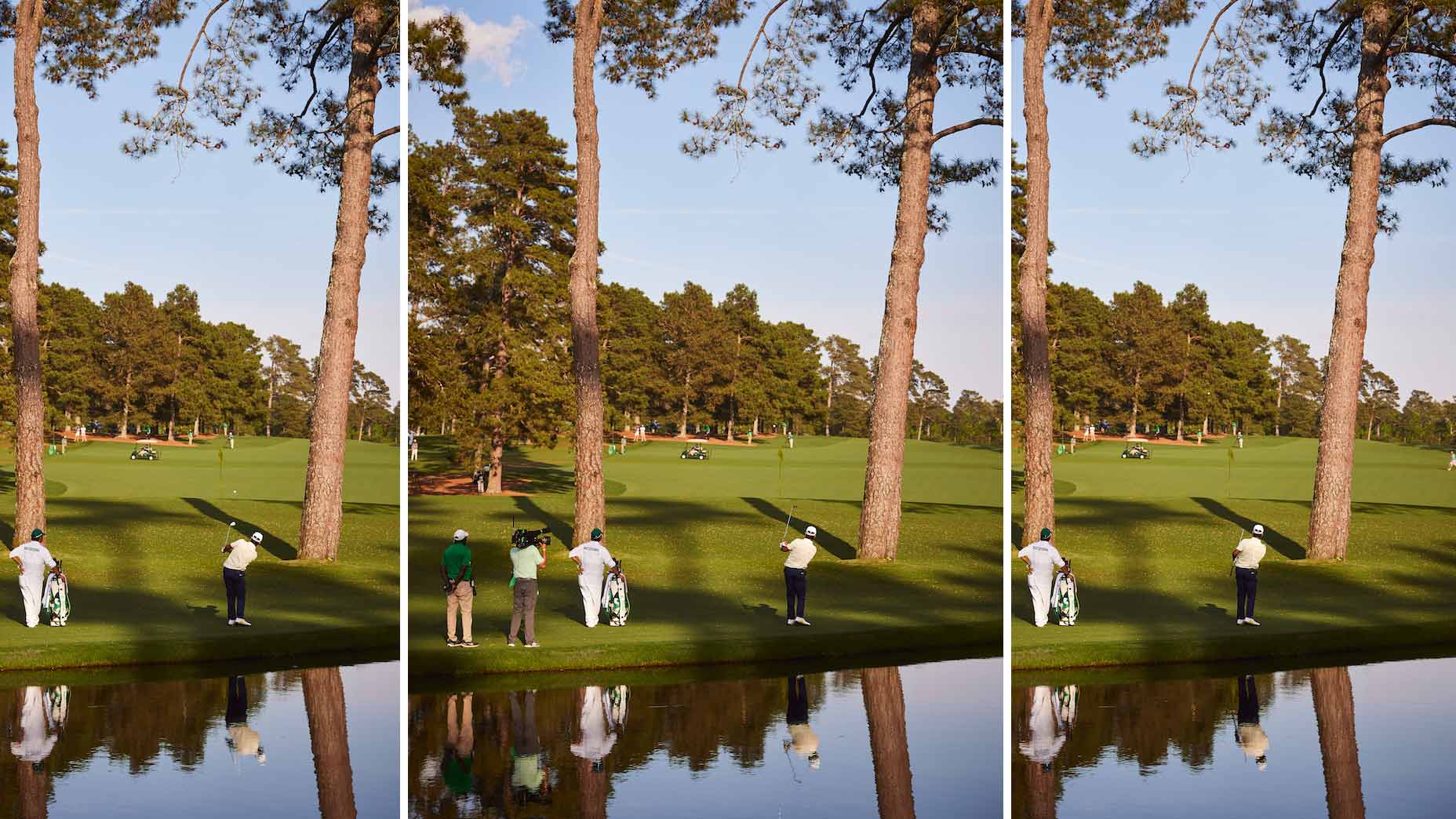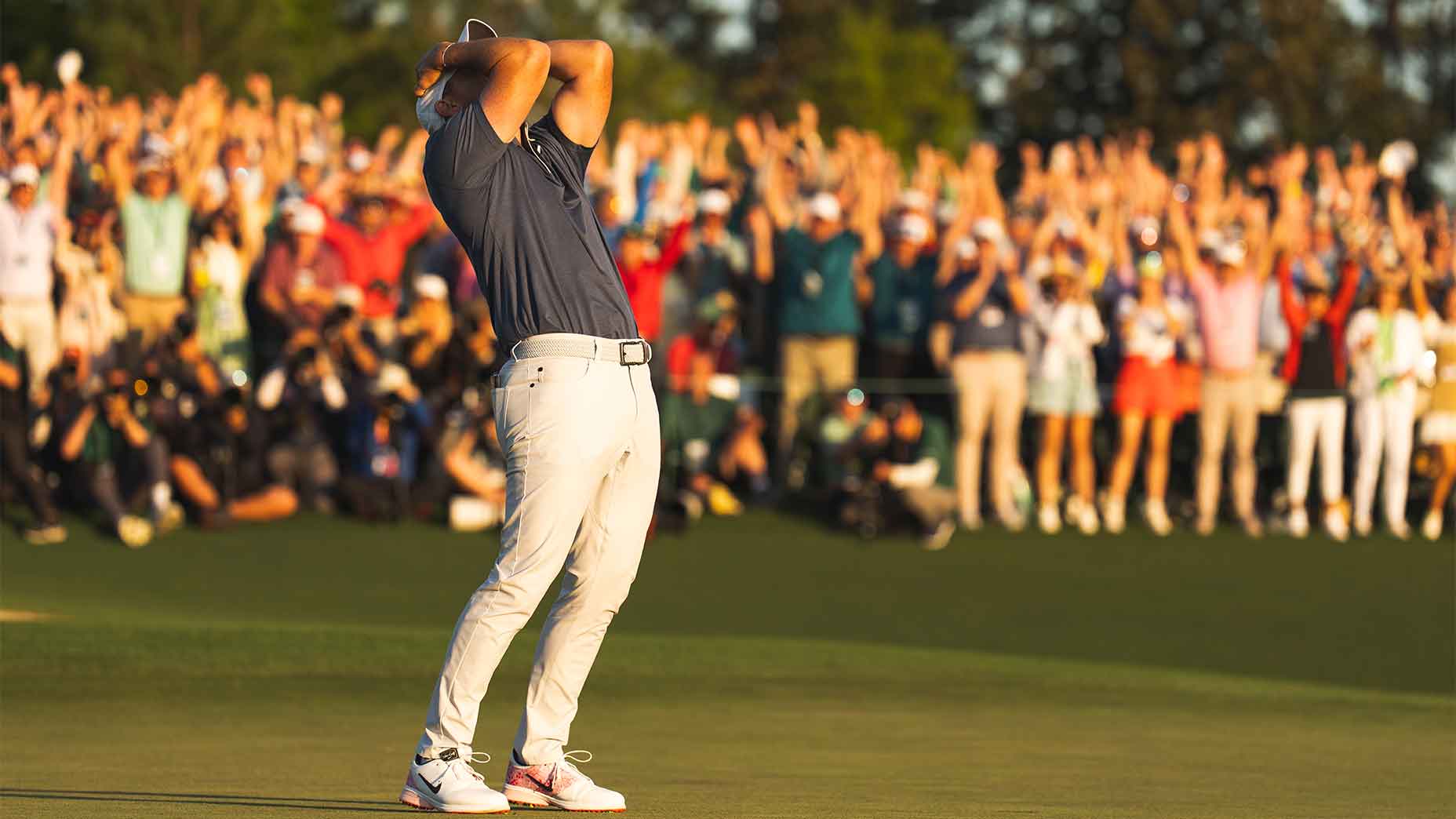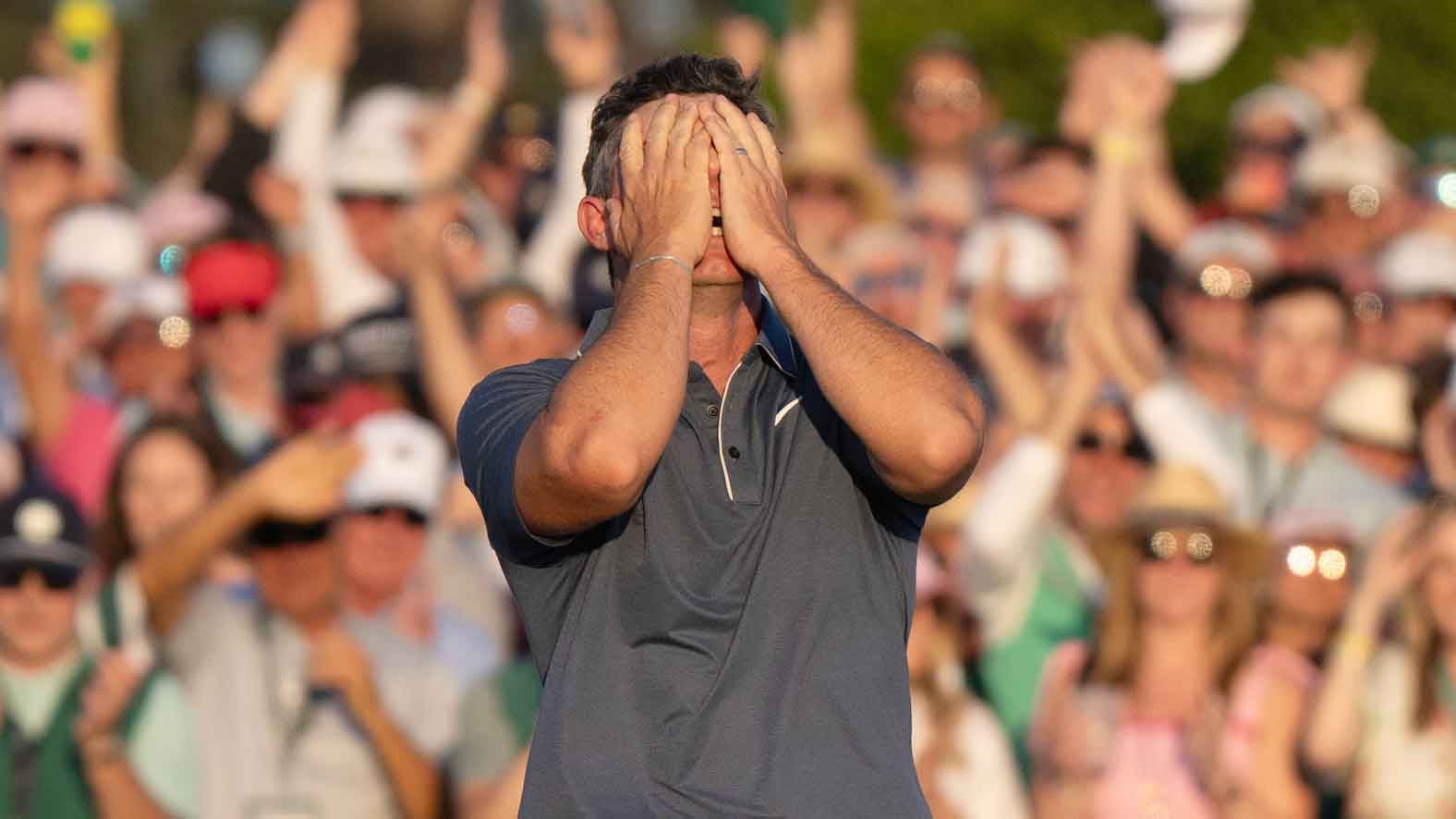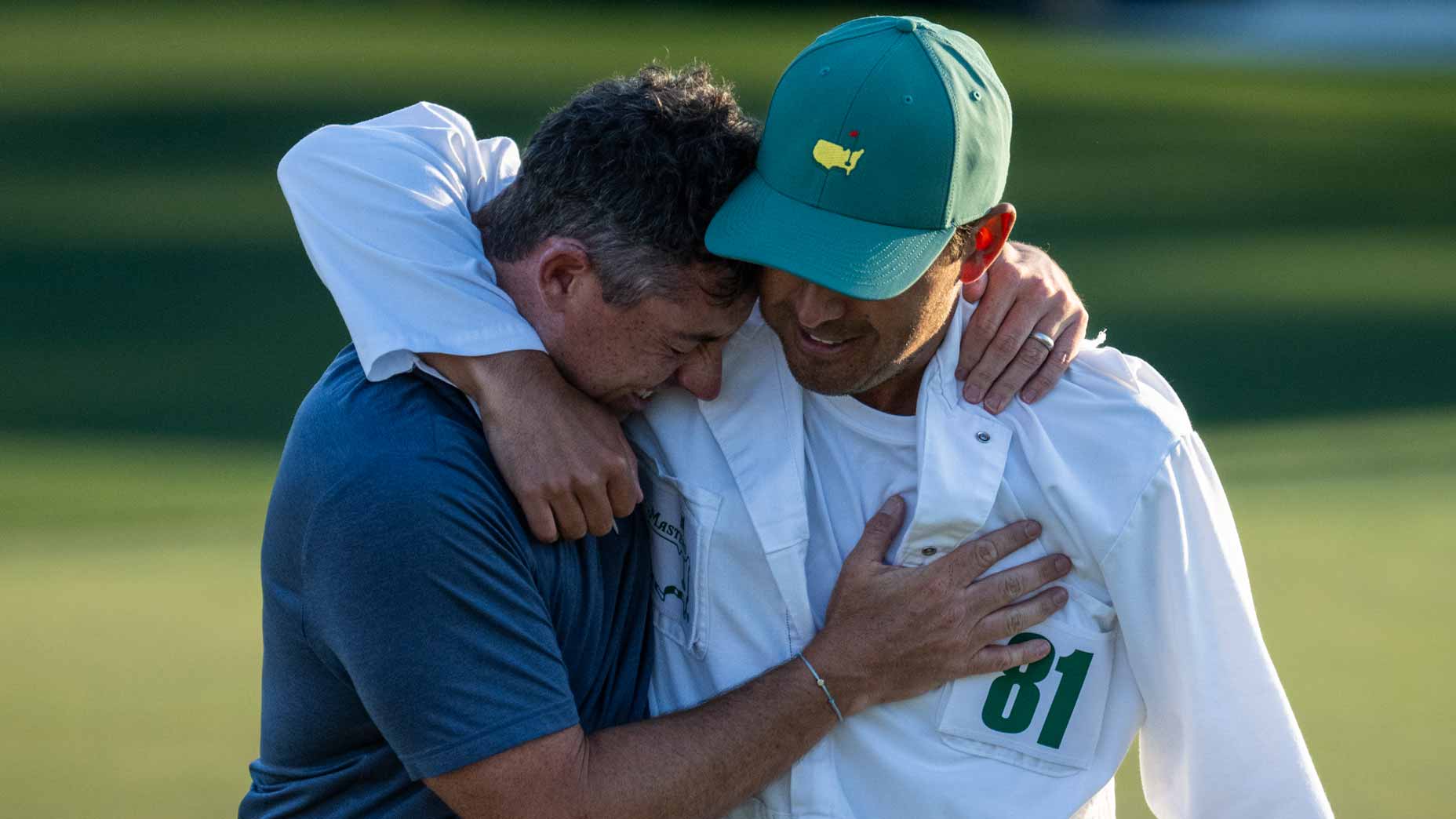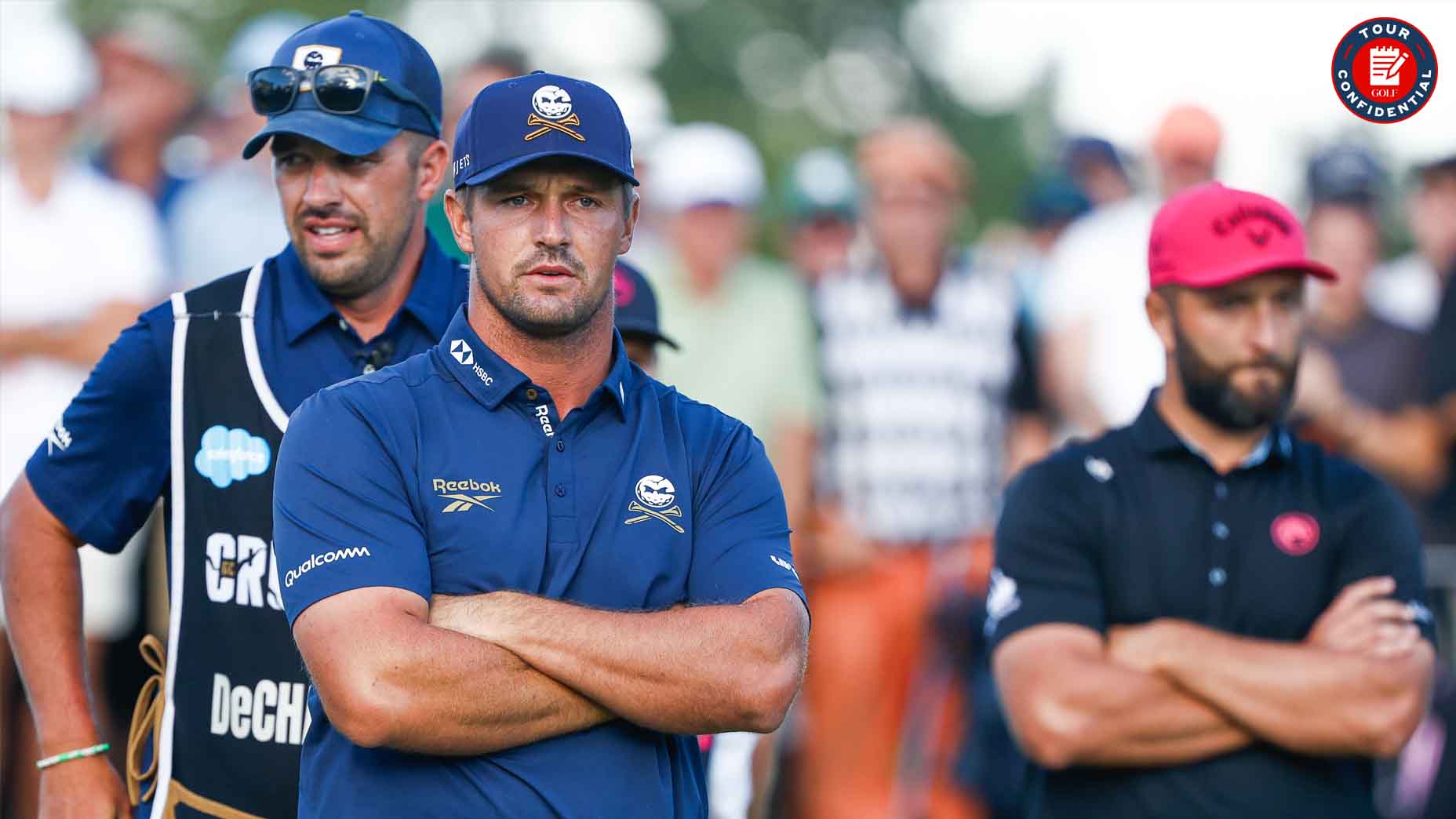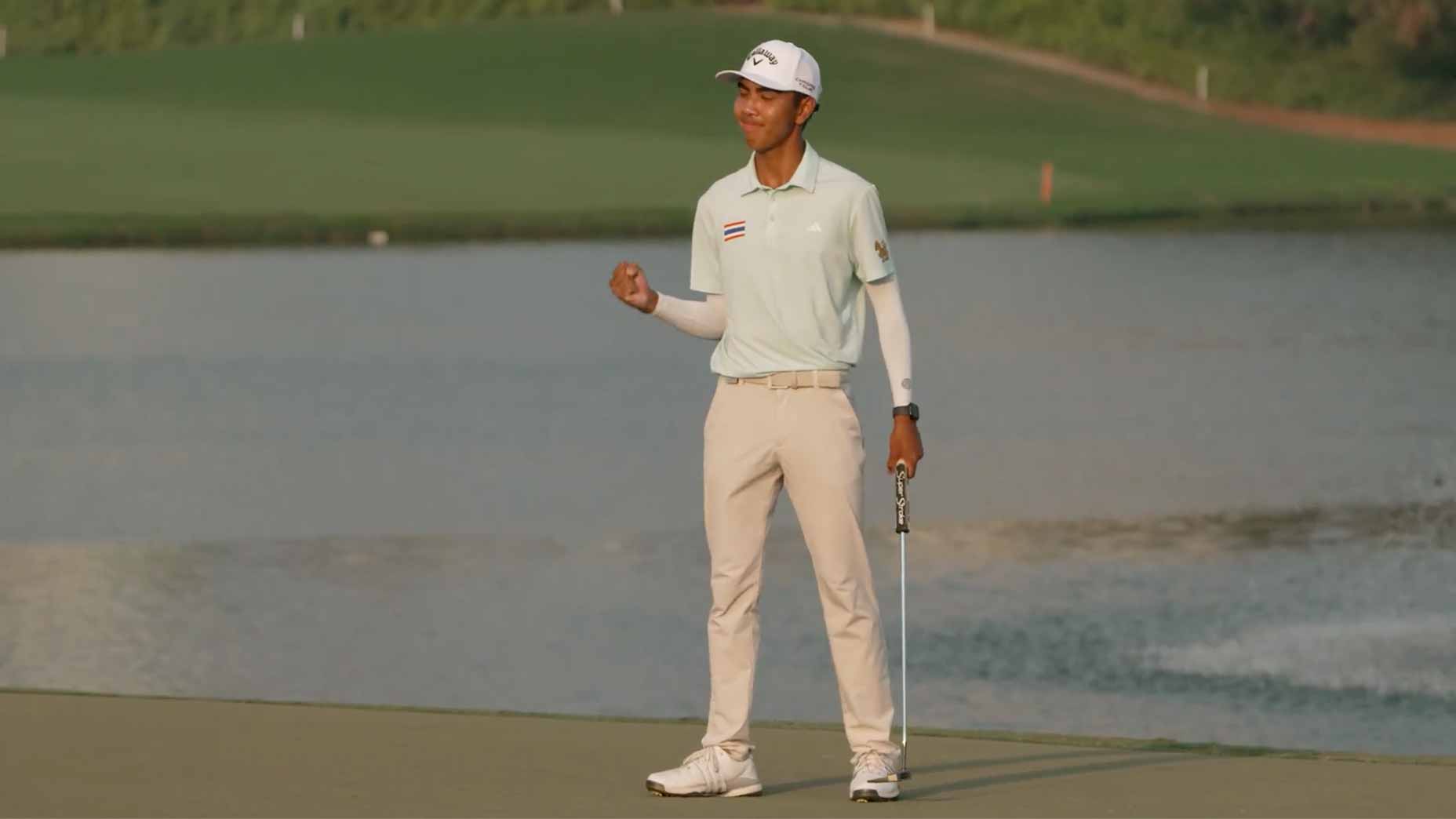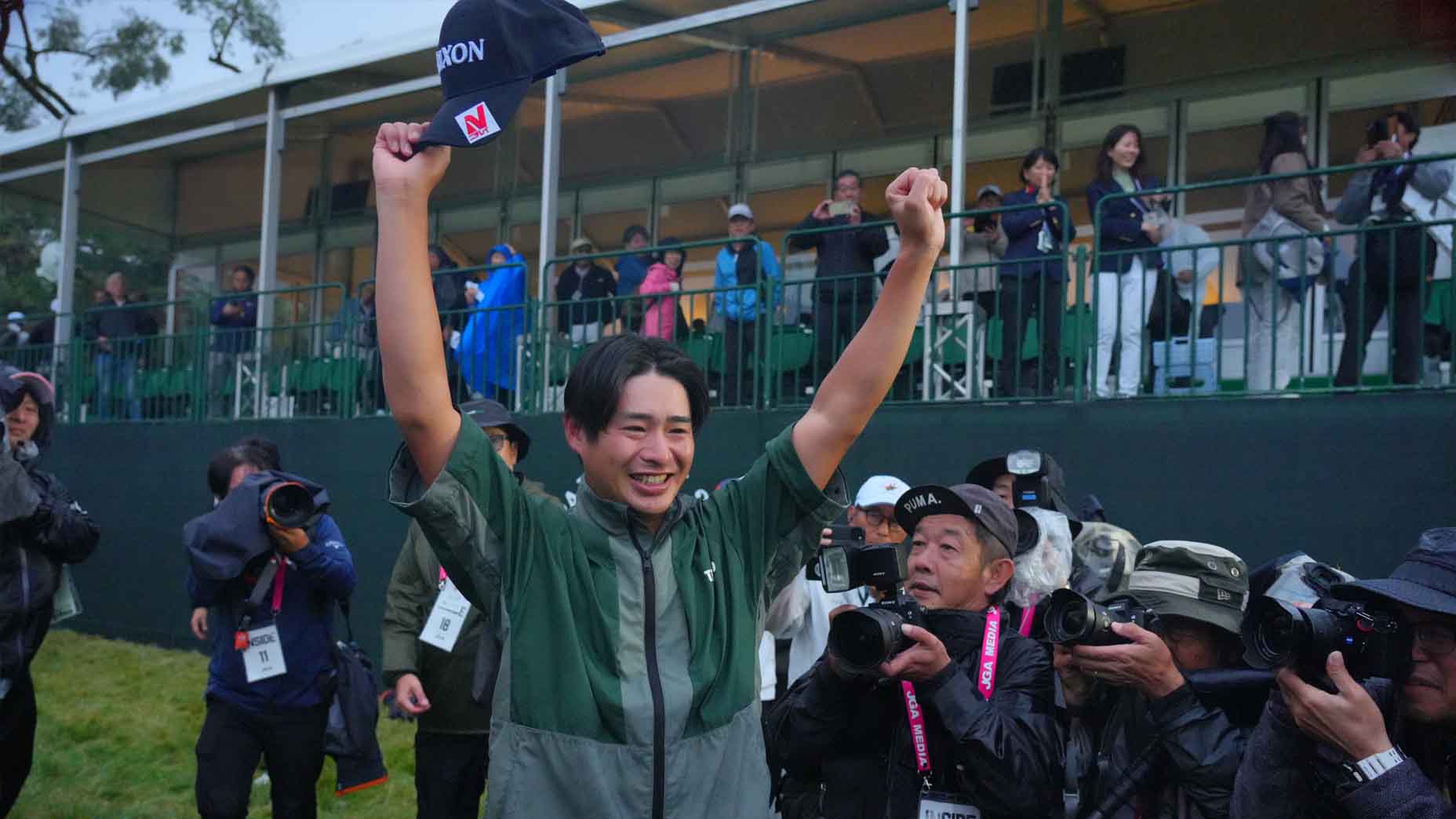AUGUSTA, Ga. — As there is Tiger, and Phil and DJ, there is now Hideki. On Sunday afternoon, Hideki Matsuyama became the first player from Japan, or anywhere in Asia, to win the Masters. He did it eight days after a 17-year-old from Japan, Tsubasa Kajitani, won the Augusta National Women’s Amateur. He did it three and a half months before the first round of Olympic golf in Tokyo.
Watashitachi no jikan, beibī!
Loosely: Our time, baby.
Hideki holed his winning putt playing in the long, Augusta spring shadows we all know so well. It was 8:03 a.m., Japan Standard Time. Monday morning, on the other side of the world.
He was cruising, for most of Sunday afternoon. For a while, his lead was almost gaudy. The tournament, mellow all week, was on the verge of becoming boring. And then Hideki went for the green with his second shot on the short par-5 15th. (Why, Hideki, why?) The day was warm and the shot — a 4-iron from 227 yards that went about 260 — was hot. His bright-white Srixon (Japanese manufacturer of fine golf balls) died a wet and murky death in the pond over the green. He made bogey. On the par-3 16th, he had a three-putt bogey. On 18, he dumped a wedge in a bunker and made bogey. It was not glorious. It was golf. Golf’s hard.

In victory, Hideki looked embarrassed, dazed, happy, emotional and, finally, triumphant.
He did his thing in Butler Cabin and, when it was over, he and Dustin Johnson led a small parade to the practice putting green, for ye olde greene jacket ceremony. They were walking west, into the setting sun. Johnson, an almost elegant figure in the game, in his own way, helped the new winner into the coat we know so well, and it was then that Hideki went full Ali, raising his fists, smiling like a birthday boy, letting go. He’s 29. Can that really be? It is. It feels like we’ve been watching him forever.
In the winner’s press conference, in a Press Building interview auditorium kept at 66 degrees so that nobody perspires under the glare of the TV lighting, Hideki sat on the elevated dais with a club moderator, Tom Nelson, to his right, and his suited, formal, stately long-time interpreter, Bob Turner, to his left. A veteran English reporter asked a question often posed to winners all over the world: What were you feeling when it was over?
Turner, in the softest voice imaginable, leaned toward Hideki and translated the question. An unmistakable look of pain crossed Hideki’s face. He lowered his chin and his head moved west and east. He said, ”When the final putt went in, I really wasn’t thinking of anything. But when I saw my caddie, Shota, and hugged him, I was happy for him because this is his first victory on the bag. And then it started sinking in, the joy of being a Masters champion.” The bag. Not my bag.
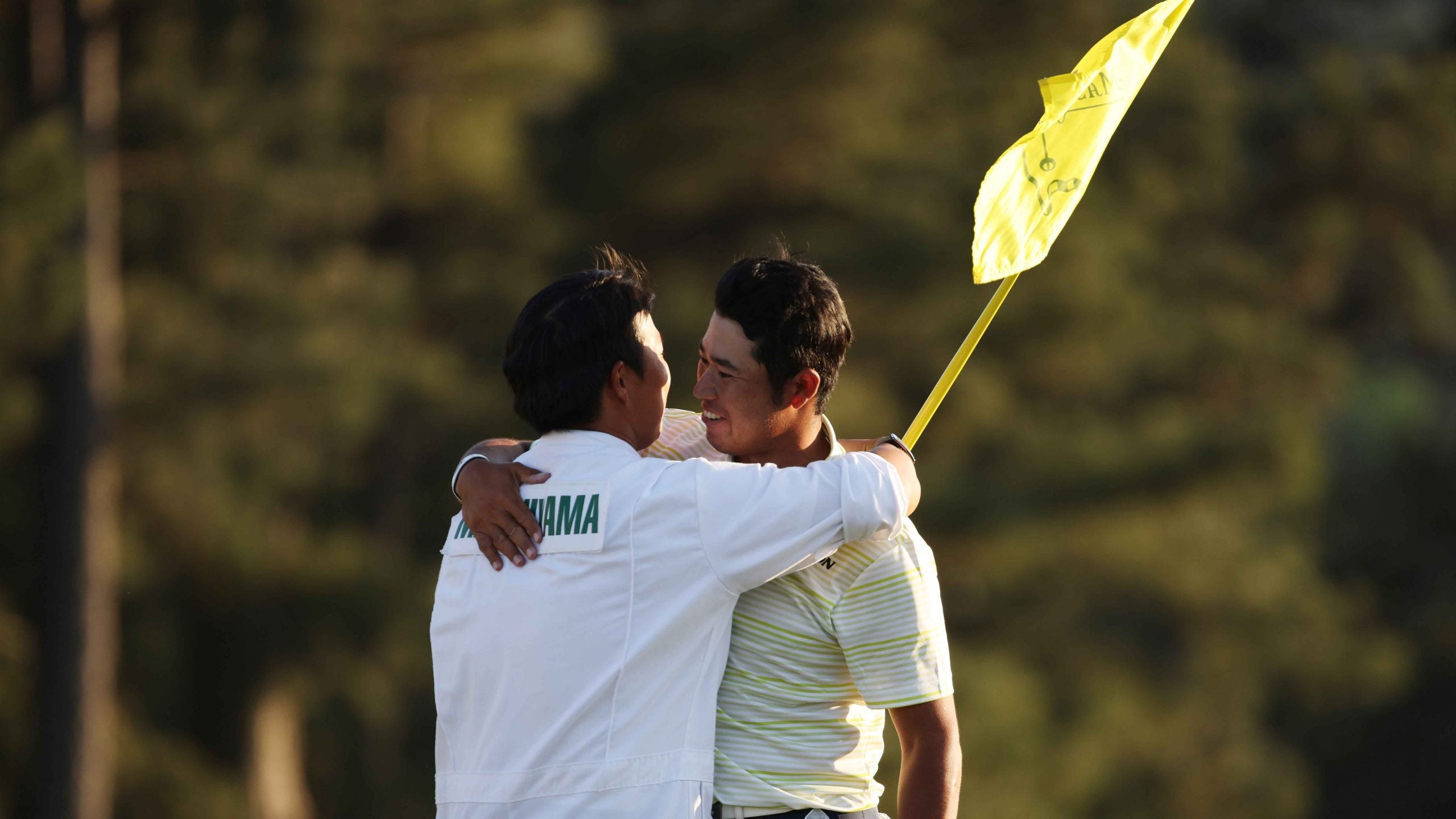
There are cultural and continental divides at work here that we Americans are unlikely to ever understand. Our thing, of course, is to let it all hang out. The Japanese are famous for their reserve. Watching Hideki is fascinating. It is amazing, the different paths there are — physically, emotionally, strategically, culturally — to 10 under par, his winning score: 69, 71, 65 and 73.
Hideki played in his first Masters 10 years ago, earning a place in the 2011 Masters field by winning the 2010 Asian Amateur, a tournament started by Augusta National as part of its Grow the Game World Tour, with Billy Payne as its front man. At the closing ceremony, Fred Ridley, Payne’s successor as club chairman, made ole Bill take a bow, and he did. Appropriately so. The Asian Am, the Latin American Am, the Augusta National Women’s Am, these are significant events in the game.
“I am delighted to be a participant in the Masters tournament, which I have dreamed of playing since my childhood days,” Hideki said in 2011, in a prepared statement. He was 19. Three weeks earlier, his country had been shaken by an earthquake. This world of ours settles down now and again but never for long. There were maybe 6,000 fans (just a guess) on the course on Sunday, not the usual 35,000. This was the second masks-up Masters. You hope there will be never be another, but challenges are coming. They always are.
It is a joke in Hideki’s camp that he putts for 20, so large is his traveling entourage.
Tiger will tell you that. Tiger could tell you that a thousand ways to Sunday. It was weird, not having him on the grounds. It was weird, not hearing a collective group moan cross the property after Xander Schauffele dumped his tee shot in the pond at 16 when he had the honor over Hideki and the tournament in his grasp. It was weird, seeing a marshal signal to a group of fans — wearing green coats — to lower their voices, what with the live golf in the vicinity. The PGA Tour is inching its way back to normal life. It will take a while.
It is a Tour cliché to say that Hideki is a rock star — in Japan. Tiger has seen that up close, when he has played with him there. On Sunday, Adam Scott said that playing with Hideki in Japan reminded him of the electric two rounds Scott played with Tiger and Phil at the 2008 U.S. Open, when Tiger, Phil and Scott were ranked Nos. 1, 2 and 3 in the world. It is a joke in Hideki’s camp that he putts for 20, so large is his traveling entourage. It’s understood, among some veteran golf hands, that Hideki understands more English than he lets on. He tries, as best he can, to insulate himself, to get himself in a bubble. It’s more work than we could know, being the emblem of golf in a golf-mad country. There have been others before him, but none like him.
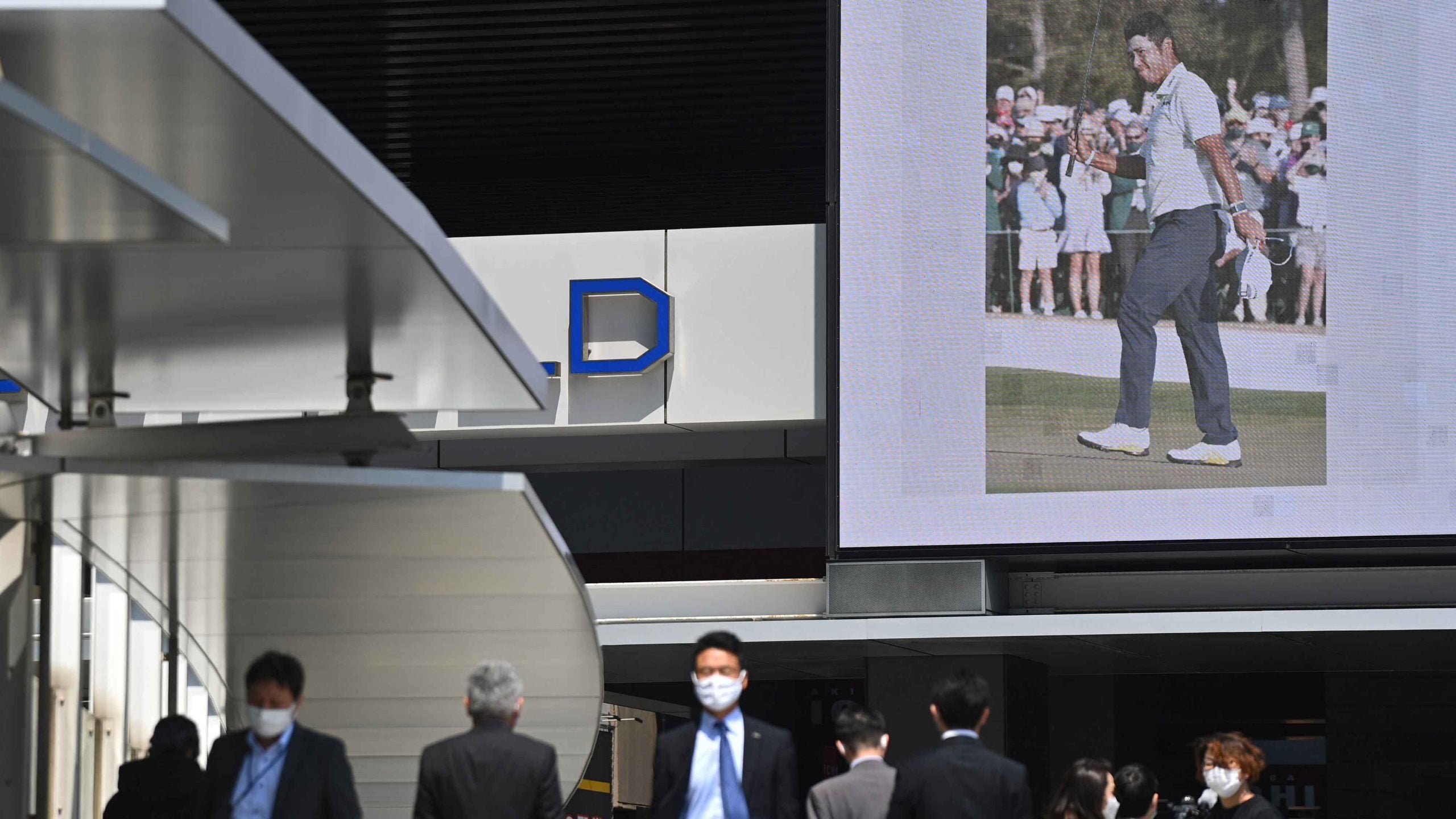
The turning point of the tournament, aside from Schauffele on 16, was Hideki in the rain delay on Saturday. The day was warm and humid and a short hard rain fell a little past 4 p.m. You could smell the rain and the heat as it bounced and rose off the macadam of the club parking lots. Players found shelter where they could, typically in the company of each other and their caddies. Hideki made the short walk to his Mercedes courtesy car, parked near the driving range, and played video games on his cell phone. He came out of the car, went back to the course and played the round’s final eight holes in six under. Crazy.
He’s expressive on the course, in a variety of ways. On the elevated 11th tee, he zonked a drive on the hardest driving hole on the course. (His swing is his own, kind of slow going back, with a distinct pause at the top before his wicked smash-this downswing.) His caddie, Shota Hayafuji, was heading down the hill, to Hideki’s ball. Hideki opened up a wooden ice cooler, filled with water bottles, ripe bananas and green Granny Smith and red Gala apples. He grabbed a Gala, went running after Shota, called his name and tossed him the apple. That’s just thoughtful.
When the tournament was over, Shota removed his cap and bowed to the course. That’s another world.
Hideki was asked at his press conference if he feels like a rock star when he’s in Japan. “I don’t know,” he said. Asked about the Summer Games in Tokyo, he said, “If I am on the team, and maybe it looks like I will be, I’ll do my best to represent my country.” Does that sound like someone who thinks of himself as a rock star? He’s a world-class golfer at the top of his game. No world-class golfer at the top of his game can be a rock star. It requires too much work. Too much alone time.
He dutifully went through his Sunday card for posterity, because Tom Nelson from the club asked him to do so.
“Eighteen,” he said. “Hit a driver. Had 140 yards in. Hit a pitching wedge into the right bunker. Blasted out to five feet and two-putted from there to be the Masters champion.”
Well, there might be more to it than that. Over time, maybe, we’ll find out more. But probably not.
Michael Bamberger welcomes your comments at Michael.Bamberger@Golf.com


